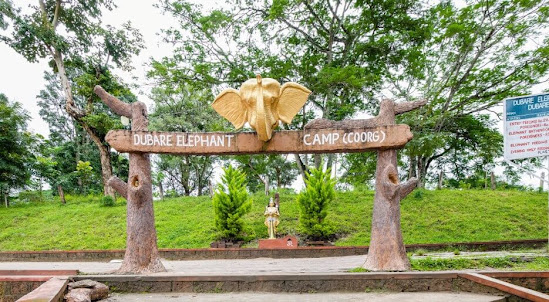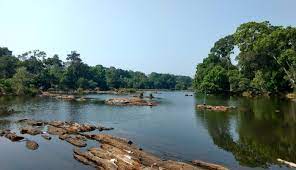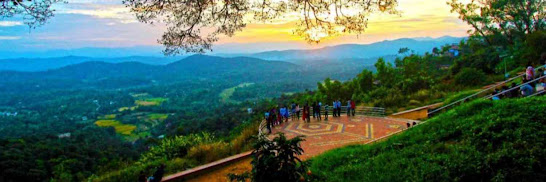Coorg
Coorg, also known as Kodagu, is a hill station located in the Western Ghats of southwestern Karnataka, India. It is known for its lush greenery, coffee plantations, and scenic beauty.
History
The earliest known history of Coorg dates back to the 2nd century AD when the region was ruled by the Kadambas, a dynasty of South India. They were followed by the Gangas, who were in power until the 11th century. In the 14th century, the region came under the rule of the Vijayanagara Empire.
In the 16th century, Coorg became an independent kingdom ruled by the Haleri Rajas. The Haleri dynasty was established by Mudduraja, who defeated the previous ruler, Lingaraja. The Haleri Rajas made significant contributions to the development of Coorg, including building roads, temples, and irrigation systems.
During the British colonial period, Coorg was known as the "Scotland of India" due to its cool climate and rolling hills. The British recognized Coorg's strategic location and its potential for coffee cultivation. They established coffee plantations in Coorg and encouraged European settlers to invest in the region. As a result, Coorg became a major producer of coffee, and the economy of the region grew rapidly.
In 1834, Coorg was annexed by the British East India Company and was made a district of the Madras Presidency. It remained a district of Madras Presidency until 1956 when it was merged with the state of Mysore (now Karnataka) after India gained independence.
Coorg played an important role in the Indian independence movement. Many Coorgis joined the Indian National Army led by Subhash Chandra Bose to fight for India's independence from British colonial rule. Several prominent freedom fighters, including General K.S. Thimayya, came from Coorg.
Today, Coorg is a popular tourist destination, attracting visitors from all over the world. It is known for its natural beauty, coffee plantations, trekking trails, and wildlife sanctuaries. Coorg has managed to retain its unique culture and traditions despite the influx of tourists, making it a must-visit destination for anyone interested in history, culture, and nature.
Culture
The Coorg district is home to several indigenous communities, each with its unique customs, traditions, and beliefs. We will explore the culture of Coorg in detail.
1. Festivals and celebrations: Coorg is famous for its colorful festivals and celebrations. Some of the most popular festivals celebrated in Coorg are:
a. Kail Podh: This is a harvest festival celebrated in August or September. The festival is celebrated to mark the end of the harvest season and the beginning of a new year.
b. Puttari: This is another harvest festival celebrated in November or December. The festival is celebrated to give thanks to the gods for a bountiful harvest.
c. Huthri: This is a festival celebrated in November or December to mark the end of the hunting season.
d. Puthari: This is a festival celebrated in December to celebrate the onset of winter.
e. Cauvery Sankramana: This is a festival celebrated in October to mark the birth of the river Cauvery.
2. Cuisine: Coorg is known for its unique cuisine, which is a blend of various flavors and spices. Some of the most popular dishes in Coorg are:
a. Pandi curry: This is a pork curry made with a blend of Coorg spices.
b. Noolputtu: This is a steamed rice noodle dish that is usually served with coconut chutney or chicken curry.
c. Akki otti: This is a flatbread made with rice flour that is usually served with a spicy meat curry.
d. Koli curry: This is a chicken curry made with Coorg spices.
3. Attire: The traditional attire of Coorg men consists of a long coat called the Kupya, which is worn over shirt and trousers. They also wear a turban called the Peta. The traditional attire of Coorg women consists of a saree and a blouse, and they wear a scarf called the Dopatta.
4. Folk art and music: Coorg have a rich tradition of folk art and music. Some of the popular folk-art forms are:
a. Kaliyattam: This is a form of folk theater that is performed during the festivals of Puttari and Kail Podh.
b. Bolak-aat: This is a form of drumming that is performed during the festivals of Huthri and Puthari.
c. Ummathaat: This is a form of folk dance that is performed by women during the festivals of Kail Podh and Puttari.
Coorg is a culturally rich hill station that has a lot to offer. From its colourful festivals and unique cuisine to its traditional attire and rich tradition of folk art and music, Coorg is a cultural gem that should not be missed.
How to reach
Coorg is a great destination for nature lovers and adventure enthusiasts. If you are planning to visit Coorg, here's a detailed guide on how to reach there:
1. By Air: The nearest airport to Coorg is the Mangalore International Airport, which is around 160 km away. From the airport, you can hire a taxi or take a bus to Coorg. Another option is the Kempegowda International Airport in Bangalore, which is about 290 km away.
2. By Train: The nearest railway station to Coorg is Mysore Junction, which is around 120 km away. From the railway station, you can take a taxi or a bus to reach Coorg. Alternatively, you can also take a train to Mangalore or Hassan and then take a taxi or a bus to Coorg.
3. By Road: Coorg is well-connected by road to major cities in Karnataka and neighbouring states. You can take a bus or hire a taxi from Bangalore, Mangalore, Mysore, or Hassan to reach Coorg. The road journey is scenic, and you can enjoy the lush green forests and coffee plantations along the way.
Places to visit
With its natural beauty, rich history, and vibrant culture, Coorg is a must-visit destination for anyone who loves the outdoors and wants to experience the best of South India. If you're planning a trip to Coorg, here are some places that you shouldn't miss.
1. Abbey Falls: This is one of the most popular tourist spots in Coorg. The waterfall cascades from a height of 70 feet and is surrounded by lush greenery. It is located about 8 km from the town of Madikeri.
2. Talacauvery: This is the source of the river Cauvery, which is considered to be a holy river by the people of South India. There is a temple dedicated to Lord Brahma here, and a dip in the holy water is said to cleanse one's sins.
3. Dubare Elephant Camp: This is an elephant training camp located on the banks of the river Cauvery. Visitors can watch the elephants being bathed, fed, and trained by the mahouts.
4. Nisargadhama: This is a beautiful island surrounded by the river Cauvery. It is a popular picnic spot, and visitors can go boating, elephant riding, and bird watching here.
5. Raja's Seat: This is a popular sunset point in Coorg. It offers a stunning view of the valley below and the surrounding hills. It is located in the town of Madikeri.
6. Madikeri Fort: This fort was built by the Kodava kings in the 17th century. It has a palace, a temple, and a museum inside it. The museum has exhibits on the history and culture of Coorg.
7. Omkareshwara Temple: This temple is dedicated to Lord Shiva and has a unique architecture that blends Hindu and Islamic styles. It is located in the town of Madikeri.
8. Coorg Wildlife Society: This is a sanctuary for injured and orphaned animals. Visitors can see tigers, leopards, bears, and other animals up close and learn about their conservation.
9. Iruppu Falls: This waterfall is located in the Brahmagiri Hills and is considered to be a holy site by the locals. Legend has it that Lord Rama and Lakshmana passed by this place during their search for Sita.
10. Coffee Plantations: Coorg is famous for its coffee plantations. Visitors can take a tour of the plantations, learn about the coffee-making process, and taste some of the best coffee in the world.
Accommodation
Here are some details on accommodation options in Coorg:
1. Resorts and Homestays: Coorg has a plethora of resorts and homestays that cater to different budgets and preferences. Some of the popular ones include Orange County Resorts, Club Mahindra, The Tamara Coorg, and Taj Madikeri Resort & Spa. Homestays are also a great option if you want to experience the local culture and cuisine.
2. Hotels: There are many hotels in Coorg that range from budget-friendly to luxury. Some of the popular ones include Hotel Coorg International, Hotel Le Coorg, and Hotel Hillview.
3. Camping: Coorg is a great place for camping, and there are many camping sites that offer a unique experience amidst nature. Some of the popular camping sites include Gonikoppal Adventure Club, Dubare Elephant Camp, and Nalknad Palace.
4. Treehouses: If you want a unique and unforgettable experience, you can opt for treehouses that offer stunning views of the surrounding forests. Some of the popular treehouse accommodations include The Machaan, Treebo Trend Vrindavan Coorg, and Kabbe Holidays.
5. Homestays: Coorg is known for its hospitality and homestays are a great way to experience it. You can find homestays in different parts of Coorg, ranging from traditional Kodava homes to modern villas.
6. Farmstays: Coorg is famous for its coffee and spice plantations, and farmstays offer a unique experience to visitors. Some of the popular farmstays in Coorg include The Ibnii Spa Resort, The Windflower Resorts and Spa, and The Silver Oaks Homestay.
Coorg offers a variety of accommodation options that cater to different budgets and preferences. Whether you are looking for a luxurious resort, a cozy homestay, or a unique camping experience, Coorg has something for everyone.
Conclusion
Coorg is a beautiful hill station that offers a perfect getaway from the hustle and bustle of city life. With its scenic beauty, rich culture, and range of activities, Coorg is a must-visit destination for anyone visiting Karnataka.



















